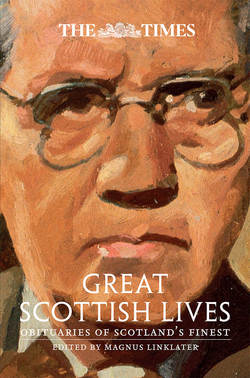Читать книгу The Times Great Scottish Lives: Obituaries of Scotland’s Finest - Magnus Linklater, Magnus Linklater - Страница 8
ОглавлениеThomas Telford
Engineer whose roads, bridges and canals opened up the Highlands
4 September 1834
We announce with feelings of deep regret, the death of this eminent and excellent individual, which took place at 5 o’clock yesterday after-noon at his house in Abingdon street.
Mr. Telford was in the 79th year of his age. The immediate cause of his death was a repetition of severe bilious attacks to which he had for some years been subject. He was a native of Langholm, in Dumfriesshire, which he left at an early age. His gradual rise from the stonemasons’ and builders’ yard to the top of his profession in his own country, or, believe we may say, in the world, is to be ascribed not more to his genius, his consummate ability, and persevering industry, than to his plain, honest, straightforward dealing, and the integrity and candour which marked his character throughout life.
Mr. Telford had been for some time past by degree retiring from professional business, to enable him the better to “adjust his mantle.” He has of late chiefly employed his time writing a detailed account of the principal works which he planned, and lived to see executed; and it is a singular and fortunate circumstance that the corrected manuscript of his work was only completed by his clerk, under his direction, two or three days ago. His works are so numerous all over the island, that there is hardly a county in England, Wales, or Scotland, in which they may not be pointed out. The Menai and Conway bridges, the Caledonian canal, the St. Katherine Docks, the Holyhead roads and bridges, the Highland roads and bridges, the Chirke and Pont-y-ciallte Aqueducts, the canals in Salop, and great works in that county, of which he was surveyor for more than half a century, are some of the traits of his genius which occur to us and which will immortalise the name of Thomas Telford.
We have access to know that he was inclined to set a higher value on the success which has attended his exertions for improving the great communication from London to Holyhead, the alterations of the line of the road, its smoothness, and the excellence of the bridges than on the success of any other work he executed; but it seems difficult to draw a line of distinction with anything like nicety of discrimination as to the degree of credit to which an engineer is entitled for ingenuity to plan, and the ability to execute magnificent and puzzling improve-ments on the public communications of a great country. The Menai bridge will probably be regarded by the public as the imperishable monument of Mr. Telford’s fame. This bridge over the Bangor ferry, connecting the counties of Carnarvon and Anglesea, partly of stone and partly of iron, on the suspension principle, consists of seven stone arches, exceeding in magnitude every work of the kind in the world. They connect the land with the two main piers, which rise 53 feet above the level of the road, over the top of which the chains are suspended, each chain being 1,714 feet from the fastenings in the rock. The first three-masted vessel passed under the bridge in 1826. Her topmasts were nearly as high as a frigate but they cleared 12 feet and a half below the centre of the roadway. The suspending power of the chains was calculated at 2,016 tons; the total weight of each chain, 12½ tons.
The Caledonian canal is another of Mr. Telford’s splendid work in constructing every part of which, though prodigious difficulties were to be surmounted, he was successful. But the individuals in high station now travelling in the most remote part of the island, from Inverness to Dunrobin Castle or from thence to Thurso, the most distant town in the north of Scotland, will there if we are not mistaken, find proofs of the exertion of Mr. Telford’s professional talent equal to any that appear in any other quarter of Britain. The road from Inverness to the county of Sutherland, and through Caithness, made, not only so far as respects its construction, but its direction under Mr. Telford’s orders, is superior in point of line and smoothness to any part of the road of equal continuous length between London and Inverness. This is a remarkable fact, which, from the great difficulties he had to overcome in passing through a rugged, hilly and mountainous district, incontrovertibly establishes his great skill in the engineering department, as well as in the construction of great public communications.
These great and useful works do not, however, more entitle the name of Telford to gratitude of his country, than his sterling worth in private life. His easiness of access and the playfulness of his disposition, even to the close of life, endear his memory to his many private friends.
